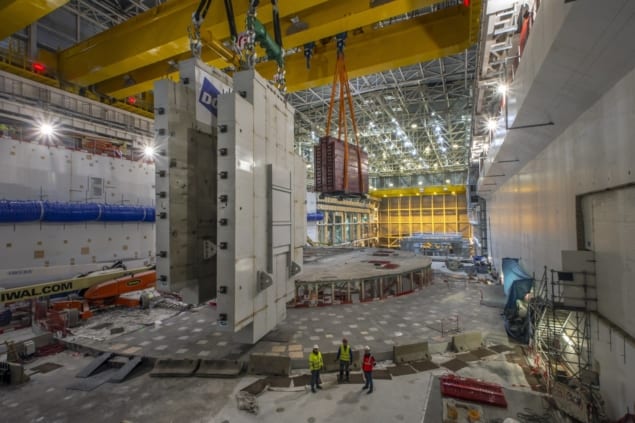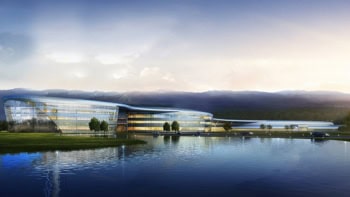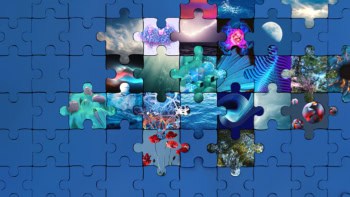
The physical sciences have not evaded the disturbance of daily life as a result of COVID-19 – the disease caused by the SARS-CoV-2 virus that is sweeping the globe. Government laboratories have either shut down or required employees to work from home while closing to visitors. The schedules of forthcoming space missions have been put at risk. Administrators of major telescopes have restricted or postponed critical observations. And individual postgraduates and junior scientists have seen their career paths put on hold as universities shut their doors.
In the US, national laboratories overseen by the Department of Energy (DOE) have suffered significant disruption. That occurred initially as a result of geography, with the virus having made its first deadly impact in the state of Washington. Most staff at the DOE’s Pacific Northwest National Laboratory in Richland, for example, have been working at home since early March. California’s Bay Area also emerged as an early hotspot.
A directive from California Governor Gavin Newsome that prohibited inessential travel and meetings led the SLAC, Berkeley, Lawrence Livermore National Laboratories, and the local branch of Sandia National Laboratory effectively to shut down, with most of their employees now working remotely at home too. There are exceptions, however. The Berkeley Lab is currently in a “safe and stable standby” status, with only critical work occurring on-site and most staff working remotely. This week, the lab’s Advanced Light Source began operating a limited number of beamlines for three days a week for users that are developing therapeutics to help combat the SARS-CoV-2 virus.
Other DOE labs have either restricted visitors, operated largely off-site or closed down as the virus created fresh hotspots. New York and New Jersey soon followed Washington state in exposure. The Princeton Plasma Physics Laboratory shut down on 13 March, requiring all its employees to work at home. A week later, Brookhaven National Laboratory responded to New York Governor Andrew Cuomo’s order that employees in “non-essential” jobs should stay at home. A subsequent order by Illinois Governor J B Pritzker also forced the Argonne and Fermilab facilities to restrict their operations. Meanwhile, the Oak Ridge National Laboratory in Tennessee and the Idaho National Laboratory have closed to visitors, researchers and the general public alike.
‘Heroes’ work’
NASA has been similarly affected, with greater impact on specific missions. On 19 March NASA administrator Jim Bridenstine announced plans to put all the agency’s centres under “stage 3 status”, which requires all but “mission essential” staff to work remotely. “We are going to take care of our people,” Bridenstine said. “That’s our first priority.”
An immediate result of NASA’s announcement was the temporary closures of the Michoud Assembly Facility in New Orleans and the nearby Stennis Space Center in Mississippi when the number of COVID-19 cases rose in the area. A result of the closures, Bridenstine noted, would be “temporarily suspension of production of the Space Launch System and Orion Hardware” – key components of the agency’s plan to land astronauts on the Moon in 2024. Analysts had already questioned the viability of that schedule under normal conditions, but it now seems even more doubtful.
A more immediate mission – Mars 2020 – remains on schedule. The $2.5bn project, which includes the newly named Perseverance rover, has a 20-day launch window that starts on 17 July. Failure to meet that window would delay the flight by two years. The mission has “the very highest priority”, Lori Glazer, head of NASA’s planetary science division, told a virtual meeting. “We’re going to ensure that we meet that launch window in July.” The project’s engineers are doing “heroes’ work” in maintaining that schedule, said NASA’s science head Thomas Zurbuchen.

COVID-19: how physics is helping the fight against the pandemic
The schedule of another prestige project, the James Webb Space Telescope (JWST), is less certain. California’s state-wide lockdown has applied to Northrop Grumman Aerospace Systems in Redondo Beach, which had been carrying out shaking tests on the $8.8bn observatory. A successor of the Hubble Space Telescope, JWST has already suffered numerous delays and is unlikely to meet its current launch date of March 2021.
Several observatories belonging to the Event Horizon Telescope have also closed down owing to the coronavirus, with the organization having cancelled its observing campaign planned to take place from late March into April. “We will have to wait for March 2021 to try again,” the organization said in a statement. Elsewhere in the world of astronomy, the Atacama Large Millimetre/submillimetre Array in Chile has suspended operations, as has the Association of Universities for Research in Astronomy, which has stopped observations at several of the telescopes it oversees and halted construction of the Vera C Rubin Observatory in Chile.
Meanwhile, the Laser Interferometer and Gravitational-wave Observatory sites in Hanford, Washington and Livingston, Louisiana, suspended observations on 27 March as did the Virgo detector in Italy. However, operations at the Kamioka Gravitational Wave Detector in northern Japan are still ongoing.
Moving online
The need for social distancing has impacted events organised by scientific societies too. The American Physical Society, which called off its March meeting at short notice, has cancelled its April meeting, but is planning some remote sessions. And the American Astronomical Society has converted its early June meeting to a fully virtual event.
Academic institutions face their own coronavirus issues. Many research universities have moved to virtual operation. Those decisions have put particular pressure on postgraduate students who need to be on-site to perform their research. Some institutions, such as Brown University and the University of Alabama at Birmingham, have frozen hiring. In late March, a group of four organizations representing universities and medical colleges called on Congress to increase spending on research by government agencies.
The $2 trillion rescue package that President Donald Trump signed on 27 March includes some relief. It grants $100m to DOE labs, $75m for National Science Foundation grants, $66m for programmes of the National Institute of Standards and Technology as well as a fund worth $14bn for universities. Observers suggest that those amounts, while welcome, are too small. But the likelihood that Congress will pass another rescue package gives the scientific community some hope of extra support.
European impact
The impact of COVID-19 is, of course, not just impacting US labs. Most labs in Europe have also closed their doors too. The CERN particle-physics lab near Geneva has now reduced all activities on-site to those that are essential for the safety and security of the lab. CERN was moving to the latter parts of a long shutdown in preparation for a major upgrade to the lab’s Large Hadron Collider. Those activities have now been reduced, with officials at CERN working out how the impact will affect the timeline of the upgrade project, which was due to be complete in the mid 2020s. The CERN Council also announced in late March that it has postponed the release of the European strategy update that was due to be released in May. Delegates react after last-minute cancellation of American Physical Society March Meeting
Yet, a few major projects are still continuing to some degree. Mission controllers at the European Space Agency’s European Space Operations Centre in Darmstadt, Germany, are planning to test instruments on the agency’s Bepicolombo mission to Mercury as it completes a fly-by of Earth on 10 April – albeit with limited personnel. The ITER fusion experiment being built in Cadarache has cancelled all on-site visitors and onsite meetings, but is continuing with “critical responsibilities and functions”. Indeed, the project is still managing to undertake some construction tasks and has taken delivering of magnet components that have arrived from member states. Yet it looks likely that the SARS-CoV-2 virus will put back the start of operations that are currently planned for 2025.
The European Spallation Source, currently under construction in Lund, Sweden, has also put in place measures for staff to work remotely as well as cancelling visits to the site. Yet work is still continuing, with workers having recently installed the water tanks that are used for the proton target. Other neutron and X-ray synchrotrons facilities in Europe have closed such as the Institut Laue–Langevin and the European Synchrotron Radiation Facility, both in Grenoble, France, as well as the ISIS neutron source in Oxfordshire, UK.
Yet some facilities remain open for scientists to carry out research on the SARS-CoV-19 virus. These include the Paul Scherrer Institute in Switzerland, the UK’s Diamond Light Source and the MAX IV synchrotron in Sweden, which are all fast-tracking relevant proposals.


